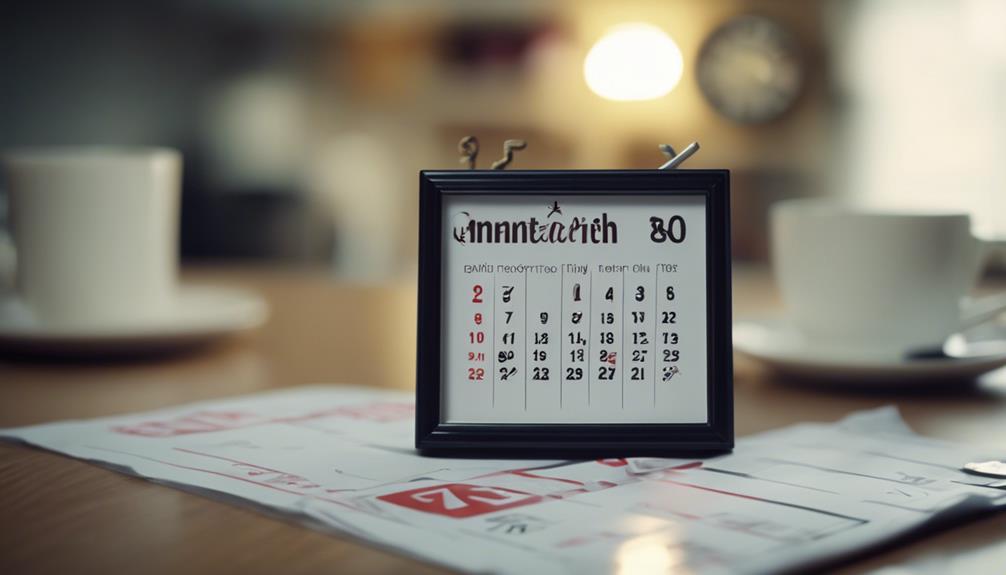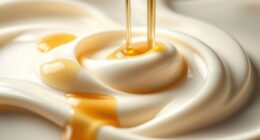Drinking coffee 48 hours after having a tooth extraction is typically considered safe for optimal healing. This waiting period allows the blood clot to form properly, which helps prevent complications. It is important to avoid consuming hot coffee as it can disrupt the clot and irritate the socket. Consult your dentist for personalized advice on when it is best to start drinking coffee again. In the meantime, consider soothing alternatives like herbal teas or decaffeinated options. The effects of caffeine on blood flow may impede the healing process, so it’s important to monitor for any signs of issues such as excessive bleeding or persistent pain. Following post-extraction care instructions and gradually reintroducing lukewarm coffee can promote a smooth recovery. It is crucial to exercise caution when reintroducing coffee after a tooth extraction, as the heat and acidity can still cause discomfort and irritation. Slowly incorporating coffee back into your diet can help minimize any negative impact on the healing process. Remember to prioritize your oral health and follow your dentist’s recommendations for a successful recovery.
Key Takeaways
- Wait 48 hours post-extraction before drinking lukewarm coffee.
- Hot coffee can disrupt blood clot formation and hinder healing.
- Gradually reintroduce coffee over 2 weeks for optimal recovery.
- Consult dentist for personalized guidance on coffee consumption timing.
- Prioritize healing by avoiding hot beverages like coffee initially.
Importance of Post-Extraction Healing Period
During the post-extraction healing period, it's important to prioritize the formation of a blood clot for proper healing. This blood clot acts as a protective barrier over the extraction site, promoting the recovery process and preventing complications such as dry socket.
Ensuring the stability of this clot is essential for the healing of the underlying tissues and bones. While it's natural to experience some discomfort during this time, avoiding disruptive activities like drinking coffee immediately after the extraction is recommended. Warm beverages are generally preferred within the first 24 hours post-extraction to support the healing process and avoid any unnecessary complications.
Proper care during this critical healing period not only aids in a faster recovery but also contributes to maintaining good oral health. If any concerns or issues arise during the recovery process, consulting your dentist promptly is crucial to ensure proper oral health protection and address any potential complications effectively.
Risks of Drinking Coffee Post-Extraction

Drinking coffee after a tooth extraction poses risks that can impede the healing process and lead to complications. When considering your coffee fix post-extraction, it's essential to be aware of the potential hazards involved:
- Dislodging the Blood Clot: The action of sipping hot coffee can dislodge the vital blood clot that forms at the extraction site, increasing the likelihood of developing dry socket—a painful condition that delays healing and exposes nerves and bone.
- Acidic Nature: Coffee's acidity can interfere with the formation of the necessary blood clot, hindering the healing process and potentially leading to prolonged discomfort and complications.
- High Temperatures: Hot beverages like coffee can irritate the sensitive nerve endings in the tooth socket, delaying proper healing and causing additional pain and discomfort.
To safeguard your recovery and prevent complications, it's advisable to wait at least 48 hours before indulging in your beloved cup of coffee post-tooth extraction.
Timing for Safe Coffee Consumption

You can safely reintroduce coffee into your routine within 48 hours following a simple tooth extraction. It's advisable to wait longer, up to 5 days, before consuming coffee after more complex extractions.
To monitor the healing process effectively, consider gradually increasing your coffee intake over the course of 2 weeks post-extraction. Consulting your dentist for personalized guidance on the timing of coffee consumption is recommended to guarantee ideal recovery.
It's essential to follow post-extraction care instructions diligently to minimize swelling and promote a smooth recovery process before resuming your coffee habit. By waiting for the recommended 48 hours and following proper post-extraction care, you can enjoy your coffee without compromising your recovery.
Alternatives to Coffee After Extraction

Consider exploring various alternatives to coffee after tooth extraction, such as herbal teas, decaf coffee, and lukewarm beverages. Here are some options to satisfy your cravings without compromising your recovery:
- Herbal Teas:
Delight in the diverse flavors of herbal teas like chamomile, peppermint, or ginger for a soothing and caffeine-free experience.
- Decaf Coffee or Cold Brew:
If you miss the taste of coffee, opt for decaffeinated versions or milder cold brew options to enjoy a familiar flavor without the caffeine.
- Diluted Fruit Juices or Fruit and Yogurt Smoothies:
Indulge in the sweetness of diluted fruit juices or treat yourself to a nutritious fruit and yogurt smoothie for an invigorating and healthy alternative to your morning pick-me-up.
Impact of Caffeine on Healing Process

Caffeine's impact on the healing process after a tooth extraction is pivotal. It can hinder proper healing by affecting blood flow, potentially leading to complications like dry socket.
Understanding the risks associated with caffeine consumption post-extraction and timing your coffee intake appropriately are essential steps in ensuring a smooth recovery process.
Caffeine's Healing Effects
Consuming coffee containing caffeine after a tooth extraction may adversely affect the healing process due to its impact on blood clot formation and maintenance. Caffeine can hinder the healing process by dilating blood vessels, increasing the risk of bleeding, and accelerating the dislodging or dissolution of the blood clot in the extraction site.
The effects of caffeine on blood flow can also interfere with the formation and protection of the blood clot, which is essential for proper healing. Additionally, hot temperatures in coffee can disturb the newly formed blood clot and irritate nerve endings in the exposed tooth socket, further hindering the healing process.
- Caffeine dilates blood vessels, increasing the risk of bleeding.
- Caffeine accelerates dislodging or dissolution of the blood clot.
- Hot temperatures in coffee can disturb the newly formed blood clot and irritate nerve endings.
Timing of Coffee Consumption
Drinking coffee shortly after a tooth extraction can impede the healing process by interfering with blood clot formation due to the effects of caffeine. Caffeine's impact on blood clotting can hinder the formation of a stable clot essential for proper healing. This can lead to complications such as bleeding and the dislodgment of the clot, potentially resulting in delayed healing or a painful condition known as dry socket.
To support ideal healing, it's recommended to wait at least 48 hours before reintroducing coffee post-extraction. However, the timing of coffee consumption post-tooth extraction may vary depending on the complexity of the procedure and individual healing factors. It's advisable to consult with your dentist for personalized recommendations on when it's safe to resume coffee consumption.
Risks of Caffeine
The impact of caffeine on the healing process following a tooth extraction can be significant. When considering the risks of caffeine consumption post-extraction, it's crucial to understand how it can affect your recovery:
- Blood Clot Dislodgment: Caffeine in coffee can cause blood vessel dilation, increasing the risk of bleeding and potentially dislodging the vital blood clot necessary for proper healing.
- Delayed Healing: Consumption of coffee with caffeine can hinder the formation and protection of the blood clot, negatively impacting the healing process of the extraction site and potentially leading to delayed recovery.
- Dry Socket Formation: High levels of caffeine in coffee can further impede the formation of the blood clot, increasing the risk of complications like dry socket, a painful condition where the clot fails to properly form or is dislodged prematurely.
To avoid these risks and promote the best healing, it's advisable to steer clear of caffeine post-tooth extraction and prioritize your recovery process.
Factors Affecting Coffee's Effects Post-Extraction

Drinking coffee too soon after a tooth extraction can be risky due to its temperature and caffeine content. Hot coffee can disturb the formation of blood clots essential for proper healing, while caffeine may elevate blood pressure, affecting the recovery process.
The acidity of coffee can also irritate the wound, potentially slowing down the healing of the extraction site.
Timing of Consumption
Consider the best timing for consuming coffee post-tooth extraction, which is influenced by factors like the type of extraction procedure and the state of the extraction site. To properly care for your oral health and guarantee a smooth healing process, it's imperative to reintroduce coffee at the right time.
Here are some key points to keep in mind:
- Wait at least 48 hours: Following a simple extraction, it's generally safe to start enjoying your coffee again after 48 hours. However, for more complex surgical extractions, it may be necessary to wait up to 2 weeks before reintroducing coffee.
- Healing process and blood clot: The presence of a stable blood clot is essential for proper healing after tooth extraction. Consuming coffee too soon can disrupt this clot and delay the healing process.
- Consult with your dentist: Every extraction case is unique, so consulting with your dentist is recommended to get personalized advice on when it's safe for you to resume coffee consumption post-extraction.
Temperature Sensitivity
To protect your healing process after a tooth extraction, it's important to be mindful of the temperature sensitivity of coffee and its impact on the extraction site. Hot coffee poses a risk as its high temperatures can disturb the blood clot formation essential for healing, potentially leading to complications.
The acidity of coffee can also irritate nerve endings in exposed tooth sockets, hindering the recovery process. It's advised to opt for lukewarm or cold coffee options after 72 hours post-extraction to avoid adverse effects on the extraction site.
Dislodging or disrupting the newly formed blood clot by consuming hot coffee can impede the healing progress. By refraining from hot beverages and opting for cooler alternatives, you can promote proper healing and minimize the likelihood of complications.
Prioritizing the temperature sensitivity of coffee in your post-extraction diet is critical for a smooth recovery process.
Indications of Healing Complications

Watch out for signs like excessive bleeding, severe pain, or swelling as indications of healing complications following a tooth extraction. These symptoms could indicate potential issues that may require prompt attention to prevent further complications.
Here are some key signs to be aware of:
- Excessive Bleeding: If bleeding persists beyond the initial few hours post-extraction or if bleeding suddenly increases, it could be a sign of a problem.
- Severe Pain: While some discomfort is normal after a tooth extraction, severe or worsening pain could signal an issue that needs to be addressed.
- Swelling: Swelling that doesn't improve or worsens over time may indicate an underlying problem that requires evaluation by a dental professional.
How to Promote Optimal Healing

Follow post-extraction care instructions diligently to enhance the healing process and prevent potential complications.
After tooth extraction, it's important to avoid consuming hot beverages like coffee for at least 48 hours. Instead, opt for soft and bland foods to promote a smooth healing process.
Your dentist will provide guidance on when it's safe to gradually reintroduce lukewarm coffee into your diet. By following your dentist's instructions and monitoring for any signs of infection or discomfort, you can guarantee a smooth progression back to enjoying your favorite beverage.
Prioritize your oral health by listening to your body's readiness for coffee consumption post-extraction. Remember, taking it slow and allowing your mouth to heal properly will contribute to optimal healing and minimize any setbacks in your recovery process.
Ensuring Smooth Recovery Post-Extraction

Guarantee a smooth recovery post-tooth extraction by closely adhering to post-operative care instructions provided by your dentist. Ensuring proper care following a dental procedure like a tooth extraction is essential for ideal healing.
Here are key steps to promote a smooth recovery:
- Avoid Disruptive Habits: Refrain from smoking, using straws, or consuming hot beverages like coffee immediately after the extraction. These activities can impede the healing process and increase the risk of complications such as dry socket.
- Follow the Healing Timeline: Wait at least 48 hours before reintroducing lukewarm coffee. The heat, caffeine, and acidity in coffee can be detrimental to the extraction site, so gradual reintroduction is advised.
- Consult with Your Dentist: Before resuming your regular coffee consumption routine post-extraction, consult with your dentist. They can provide personalized guidance based on your healing progress and specific dental needs.
Frequently Asked Questions
Can I Drink Coffee 2 Days After Tooth Extraction?
Yes, you can drink coffee 2 days after a tooth extraction in most cases. However, it's important to take into account the type of extraction and your individual healing process.
While simple extractions typically allow for coffee consumption after 48 hours, complex procedures may require a longer wait. Consult your dentist for personalized advice and gradually reintroduce coffee to prevent potential complications and support proper healing.
Does Coffee Increase Risk of Dry Socket?
Drinking coffee shortly after tooth extraction can indeed heighten the risk of dry socket. The heat, caffeine, and acidity in coffee can impede proper blood clot formation essential for healing, potentially leading to this painful condition. To steer clear of complications, it's advisable to avoid coffee post-extraction.
Following your dentist's advice to skip coffee during this delicate healing period is key to ensuring a smooth recovery process and reducing the risk of dry socket.
What Can I Drink 3 Days After Tooth Extraction?
Follow these steps to guarantee a smooth recovery process and minimize any risks after a tooth extraction.
Opt for lukewarm coffee three days post-surgery, as hot beverages can irritate the extraction site. Consider gentle options like cold brew or decaf to avoid potential discomfort.
Gradually reintroduce coffee to your routine based on your healing progress. Consult your dentist for personalized advice on when it's safe to enjoy your favorite caffeinated beverage post-surgery.
How Long After Tooth Extraction Can I Drink Hot Drinks?
After tooth extraction, it's best to wait at least 48 hours before indulging in hot drinks like coffee. Hot beverages can hinder healing by irritating the extraction site, potentially leading to complications such as dry socket. Opting for lukewarm or cold coffee instead can help prevent discomfort and support proper recovery.
Following your dentist's advice on reintroducing hot drinks post-extraction plays an essential role in ensuring a smooth healing process.
Conclusion
In summary, waiting at least 48 hours before enjoying your favorite cup of coffee after a tooth extraction is essential for the best healing.
While the temptation may be strong, it's important to prioritize your oral health and follow the recommended guidelines.
Remember, patience is key in ensuring a smooth and successful recovery.
As they say, good things come to those who wait – including that first sip of coffee after your extraction!









